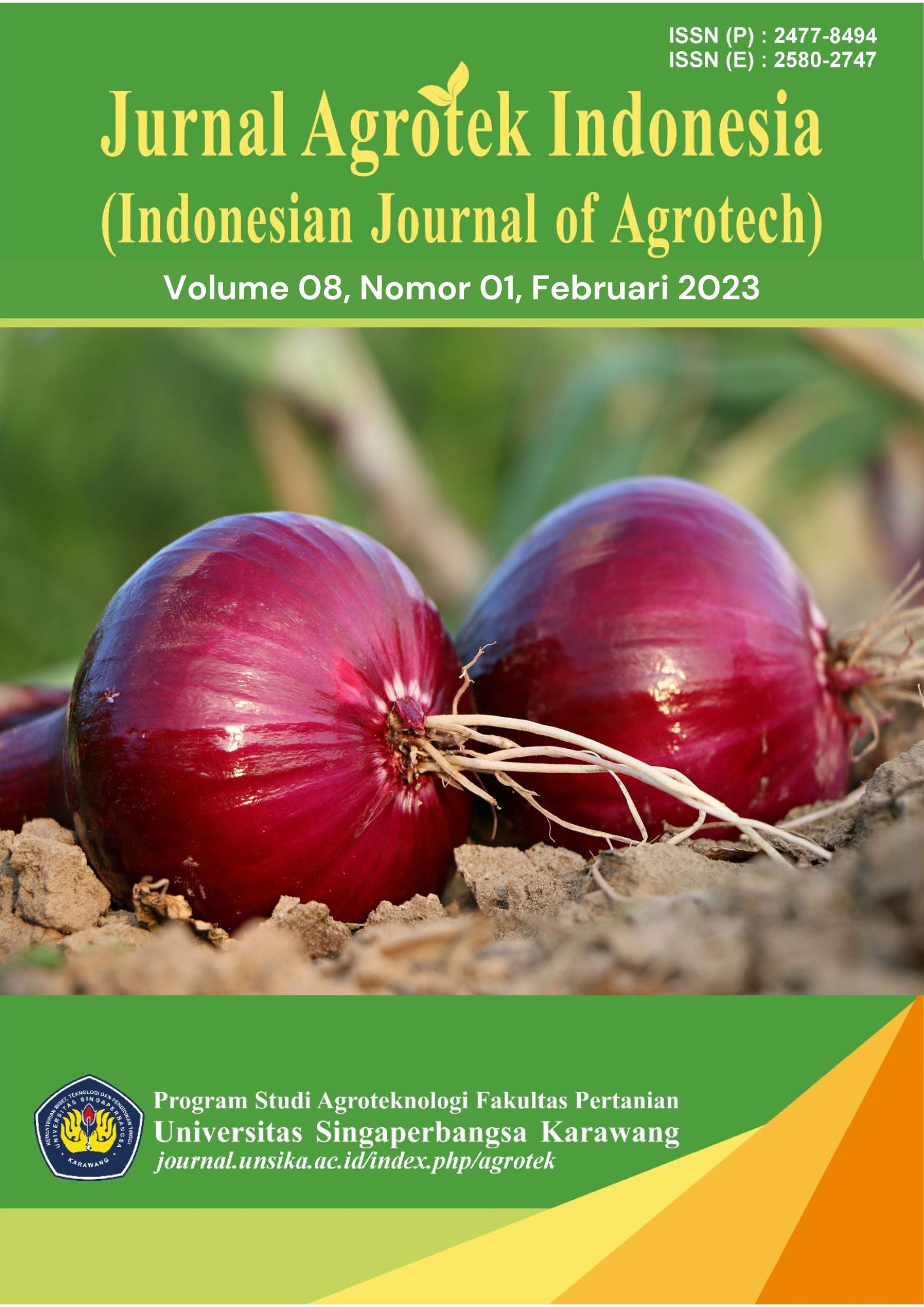Characterization of the Agronomic Appearance of Some Accessions of Shallots (Allium cepa L) in the Karawang Lowlands
Abstract
The demand for onions in Indonesia is always increasing, but shallot production has not been able to meet the needs of the community. The purpose of this study was to obtain the best accessions that can be used in the selection of plant breeding that has the best potential in the Karawang area. So that it can increase the productivity and resistance of shallot plants in the lowlands of Karawang. The onion research was carried out for 3 months, starting from December 2021 to March 2022. Located in UNSIKA New Land, Pasir Jengkol Village, Majalaya District, Karawang Regency, West Java Province. The location of the coordinates is 6ᵒ18'5"LS and 107ᵒ20'24"E, with an altitude of 15 meters above sea level (Google Earth). This study was arranged using a Randomized Block Design (RAK) with 8 treatments (shallot accessions) and 4 replications, in each replication there were 4 samples with a total of 128 experimental units. Data were analyzed using analysis of variance and further test with DMRT (Duncan Multiple Range Test) at 5% level. The results of this experiment showed that there was a significant effect on the appearance of the agronomic characterization of shallot accession on the growth and yield components (number of tillers, wet bulb weight per plant, dry bulb weight per plant). Accession BLR7 (Blue Lancor) gave the highest average yield on the number of tillers of 12.4. Accession BLR7 (Blue Lancor) also gave the highest yield of wet tuber weight per plant, which was 23.84 grams. Accession LKG1 (Lokal Karawang) gave the highest yield on tuber dry weight per plant of 18.58 grams
Downloads

Downloads
Published
How to Cite
Issue
Section
License
Copyright (c) 2023 Ridhwan Falah

This work is licensed under a Creative Commons Attribution-ShareAlike 4.0 International License.








